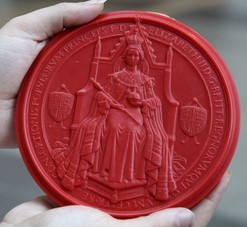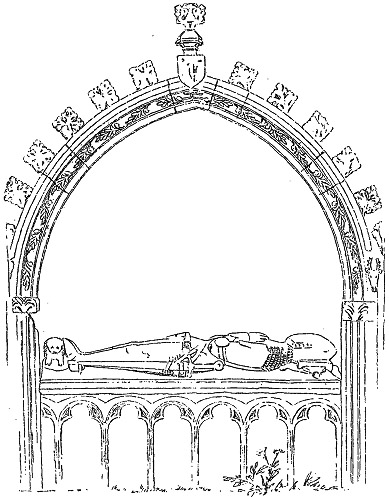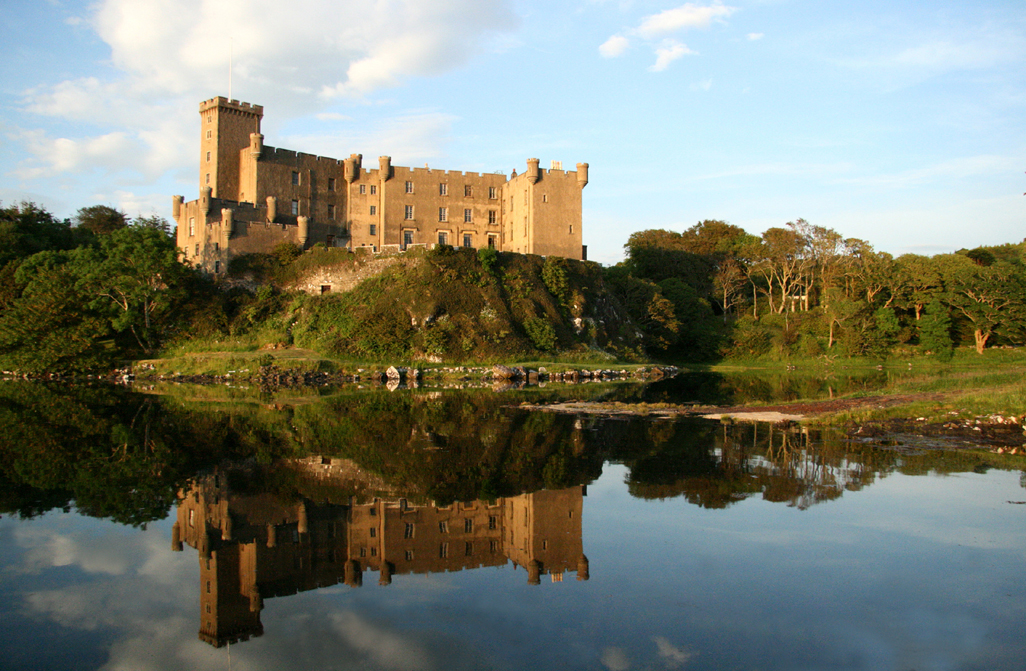|
Donald Mackay, 11th Of Strathnaver
Donald Mackay, 11th of Strathnaver (died 1550), was the eleventh chief of the ancient Clan Mackay, a Scottish clan of the Scottish Highlands. Early life Donald Mackay was the second eldest son of Iye Roy Mackay, 10th of Strathnaver, and his wife who was the daughter of Norman, son of Patrick O'Beolan of Carloway, Lewis. Donald's elder brother, John Mackay, 11th of Strathnaver, died in 1529 without legitimate male issue and therefore Donald was able to succeed him as chief of the Clan Mackay. Alliance with the Clan Forbes and Clan Campbell In around 1529 Donald Mackay of Strathnaver assisted the Master of Forbes (of Clan Forbes) and Sir John Campbell of Cawdor during a feud in which Alexander Seaton of Meldrum was killed. Historian Angus Mackay states that it is with interest that at this time the Mackays and Forbeses who claim to have sprung from the same kindred stock in the distant past, are found acting in concert. It was probably for the death of Seaton of Meldrum that Macka ... [...More Info...] [...Related Items...] OR: [Wikipedia] [Google] [Baidu] |
Clan Mackay
Clan Mackay ( ; gd, Clann Mhic Aoidh ) is an ancient and once-powerful Scottish Highlands, Highland Scottish clan from the far North of the Scottish Highlands, but with roots in the old Mormaer of Moray, Kingdom of Moray. They supported Robert I of Scotland, Robert the Bruce during the Wars of Scottish Independence in the 14th century. In the centuries that followed they were anti-Jacobitism, Jacobite. The territory of the Clan Mackay consisted of the parishes of Farr, Sutherland, Farr, Tongue, Highland, Tongue, Durness and Eddrachillis, and was known as Strathnaver, in the north-west of the county of Sutherland. However, it was not until 1829 that Strathnaver was considered part of Sutherland when the chief sold his lands to the Earl of Sutherland, Earls of Sutherland and the Highland Clearances then had dire consequences for the clan. In the 17th century the Mackay chief's territory had extended to the east to include the parish of Reay in the west of the neighbouring county of ... [...More Info...] [...Related Items...] OR: [Wikipedia] [Google] [Baidu] |
James V Of Scotland
James V (10 April 1512 – 14 December 1542) was List of Scottish monarchs, King of Scotland from 9 September 1513 until his death in 1542. He was crowned on 21 September 1513 at the age of seventeen months. James was the son of James IV of Scotland, King James IV and Margaret Tudor, and during his childhood Kingdom of Scotland, Scotland was governed by regents, firstly by his mother until she remarried, and then by his second cousin, John Stewart, Duke of Albany, John, Duke of Albany. James's personal rule began in 1528 when he finally escaped the custody of his stepfather, Archibald Douglas, 6th Earl of Angus, Archibald Douglas, Earl of Angus. His first action was to exile Angus and confiscate the lands of the Clan Douglas, Douglases. James greatly increased his income by tightening control over royal estates and from the profits of justice, customs and feudal rights. He founded the College of Justice in 1532, and also acted to end lawlessness and rebellion in the Anglo-Scotti ... [...More Info...] [...Related Items...] OR: [Wikipedia] [Google] [Baidu] |
Armadale, Sutherland
Armadale ( gd, Armadal, sco, Airmadale) is a small village on the north coast of Scotland, in the council area of Highland. The village is part of the parish of Farr, in the county of Sutherland. Armadale is about west of the town of Thurso, off the A836 road. The population of Armadale is 50 and shrinking, with 32% of the population being retired, and the remaining 68% population are working or at school. Armadale is first mentioned in charters in the 13th century as part of the parish of Farr. There was a small fishing hamlet consisting of two or three houses north of the village before the year 1600 called Port Moir. History William Honyman (whose mother, Margaret, was a daughter of John Mackay of Strathy) bought the estate from his grandfather about 1779 and built a new mansion at Armadale. The Armadale estate under the ownership of Honeyman was the first to bring the North Country Cheviot to Sutherland. William Honeyman, as a judge of the Court of Session took the titl ... [...More Info...] [...Related Items...] OR: [Wikipedia] [Google] [Baidu] |
Farr, Sutherland
{{Highland-geo-stub ...
Farr ( gd, Fàrr) is a parish in the county of Sutherland in the Scottish council area of Highland. The parish also includes a small hamlet named Farr. The village of Bettyhill lies less than to the west of the hamlet along the A836 road. Parish of Farr Villages and hamlets Villages and hamlets within the parish of Farr include: * Achiemore * Achina *Altnaharra * Armadale *Aultiphurst *Balnacraig *Bettyhill *Farr (the hamlet) * Lednagullin *Melvich *Strathnaver * Swordly *Upper Bighouse References Populated places in Sutherland Civil parishes of Scotland Farr, Sutherland Farr ( gd, Fàrr) is a parish in the county of Sutherland in the Scottish council area of Highland. The parish also includes a small hamlet named Farr. The village of Bettyhill lies less than to the west of the hamlet along the A836 road. Pari ... [...More Info...] [...Related Items...] OR: [Wikipedia] [Google] [Baidu] |
Great Seal Of Scotland
The Great Seal of Scotland ( gd, Seala Mòr na h-Alba) is a principal national symbol of Scotland that allows the monarch to authorise official documents without having to sign each document individually. Wax is melted in a metal mould or matrix and impressed into a wax figure that is attached by cord or ribbon to documents that the monarch wishes to make official. The earliest seal impression, in the Treasury of Durham Cathedral, is believed to be the Great Seal of Duncan II and dates to 1094. The current keeper of the Great Seal of Scotland is the First Minister of Scotland and it is considered as one of the highest honours of that office. History The chancellor had the custody of the King's Seal. Strictly, the continuation of the Great Seal of Scotland was guaranteed by the Treaty of Union which provided that "a Seal in Scotland after the Union be alwayes kept and made use of in all things relating to private Rights or Grants, which have usually passed the Great Seal of ... [...More Info...] [...Related Items...] OR: [Wikipedia] [Google] [Baidu] |
Charter
A charter is the grant of authority or rights, stating that the granter formally recognizes the prerogative of the recipient to exercise the rights specified. It is implicit that the granter retains superiority (or sovereignty), and that the recipient admits a limited (or inferior) status within the relationship, and it is within that sense that charters were historically granted, and it is that sense which is retained in modern usage of the term. The word entered the English language from the Old French ''charte'', via Latin ''charta'', and ultimately from Greek χάρτης (''khartes'', meaning "layer of papyrus"). It has come to be synonymous with a document that sets out a grant of rights or privileges. Other usages The term is used for a special case (or as an exception) of an institutional charter. A charter school, for example, is one that has different rules, regulations, and statutes from a state school. Charter can be used as a synonym for "hire" or "lease", as in ... [...More Info...] [...Related Items...] OR: [Wikipedia] [Google] [Baidu] |
Stirling
Stirling (; sco, Stirlin; gd, Sruighlea ) is a city in central Scotland, northeast of Glasgow and north-west of Edinburgh. The market town, surrounded by rich farmland, grew up connecting the royal citadel, the medieval old town with its merchants and tradesmen, the Old Bridge and the port. Located on the River Forth, Stirling is the administrative centre for the Stirling council area, and is traditionally the county town of Stirlingshire. Proverbially it is the strategically important "Gateway to the Highlands". It has been said that "Stirling, like a huge brooch clasps Highlands and Lowlands together". Similarly "he who holds Stirling, holds Scotland" is often quoted. Stirling's key position as the lowest bridging point of the River Forth before it broadens towards the Firth of Forth made it a focal point for travel north or south. When Stirling was temporarily under Anglo-Saxon sway, according to a 9th-century legend, it was attacked by Danish invaders. The sound of a ... [...More Info...] [...Related Items...] OR: [Wikipedia] [Google] [Baidu] |
Clan Mackenzie
Clan Mackenzie ( gd, Clann Choinnich ) is a Scottish clan, traditionally associated with Kintail and lands in Ross-shire in the Scottish Highlands. Traditional genealogies trace the ancestors of the Mackenzie chiefs to the 12th century. However, the earliest Mackenzie chief recorded by contemporary evidence is Alexander Mackenzie of Kintail who died some time after 1471. Traditionally, during the Wars of Scottish Independence, the Mackenzies supported Robert the Bruce, but feuded with the Earls of Ross in the latter part of the 14th century. During the 15th and 16th-centuries the Mackenzies feuded with the neighboring clans of Munro and MacDonald. In the 17th century the Mackenzie chief was made Earl of Seaforth in the peerage of Scotland. During the Scottish Civil War of the 17th century the Mackenzies largely supported the Royalists. During the Jacobite rising of 1715 the chief and clan of Mackenzie supported the Jacobite cause. However, during the Jacobite rising of 1745 the ... [...More Info...] [...Related Items...] OR: [Wikipedia] [Google] [Baidu] |
Clan MacDonell Of Glengarry
Clan MacDonnell of Glengarry ( gd, Clann Dòmhnaill Ghlinne Garaidh) is a Scottish clan and is a branch of the larger Clan Donald.Way, George and Squire, Romily. ''Collins Scottish Clan & Family Encyclopedia''. (Foreword by The Rt Hon. The Earl of Elgin KT, Convenor, The Standing Council of Scottish Chiefs). Published in 1994. Pages 214 – 215. The clan takes its name from Glen Garry where the river Garry runs eastwards through Loch Garry to join the Great Glen about 16 miles (25 km) north of Fort William, Highland. History Origins of the clan Glengarry is in Lochaber which was part of the ancient Kingdom of Moray that was ruled by the Picts. Ranald was the son of John of Islay, Lord of the Isles, and Ranald himself had five sons. One of them was Alan, the progenitor of the Clan Macdonald of Clanranald and another was Donald. Donald married twice: firstly Laleve, daughter of the chief of Clan MacIver, by whom he had one son named John. Donald married secondly a ... [...More Info...] [...Related Items...] OR: [Wikipedia] [Google] [Baidu] |
Clan MacLeod
Clan MacLeod (; gd, Clann Mac Leòid ) is a Highland Scottish clan associated with the Isle of Skye. There are two main branches of the clan: the MacLeods of Harris and Dunvegan, whose chief is MacLeod of MacLeod, are known in Gaelic as ' ("seed of Tormod"); the Clan MacLeod of Lewis and Raasay, whose chief is MacLeod of The Lewes ( gd, Mac Ghille Chaluim), are known in Gaelic as ' ("seed of Torcall"). Both branches claim descent from Leòd, who lived in the 13th century. Today, Clan MacLeod of The Lewes, Clan MacLeod of Raasay, and Clan MacLeod are represented by "Associated Clan MacLeod Societies", and the chiefs of the three clans. The association is made up of ten national societies across the world including: Australia, Canada, England, France, Germany, New Zealand, Scotland, South Africa, Switzerland, and the United States. History Origins The surname MacLeod means 'son of Leod'. The name Leod is an Anglicization of the Scottish Gaelic name Leòd, which is thought to ... [...More Info...] [...Related Items...] OR: [Wikipedia] [Google] [Baidu] |
Clan MacLeod Of Lewis
Clan MacLeod of The Lewes, commonly known as Clan MacLeod of Lewis ( gd, Clann Mhic Leòid Leòdhais), is a Scottish Highlands, Highland Scottish clan, which at its height held extensive lands in the Western Isles and west coast of Scotland. From the 14th century up until the beginning of the 17th century there were two branches of Macleods: the MacLeods of Dunvegan and Harris, Outer Hebrides, Harris (Clan MacLeod); and the Macleods of the Isle of Lewis. In Scottish Gaelic, Gaelic the Macleods of Lewis were known as Sìol Thorcaill ("Seed of Torquil"), and the MacLeods of Dunvegan and Harris were known as Sìol Thormoid ("Seed of Tormod"). The traditional progenitor of the MacLeods was Leod, made a son of Olaf the Black, King of Mann and the Isles, by a now-discredited tradition. An older, more accepted tradition names his father Olvir and describes the clan as Sliochd Olbhur. Tradition gave Leod two sons, Tormod, son of Leod, Tormod - progenitor of the Macleods of Harris and Dunve ... [...More Info...] [...Related Items...] OR: [Wikipedia] [Google] [Baidu] |
.jpg)



.jpg)


.jpg)
